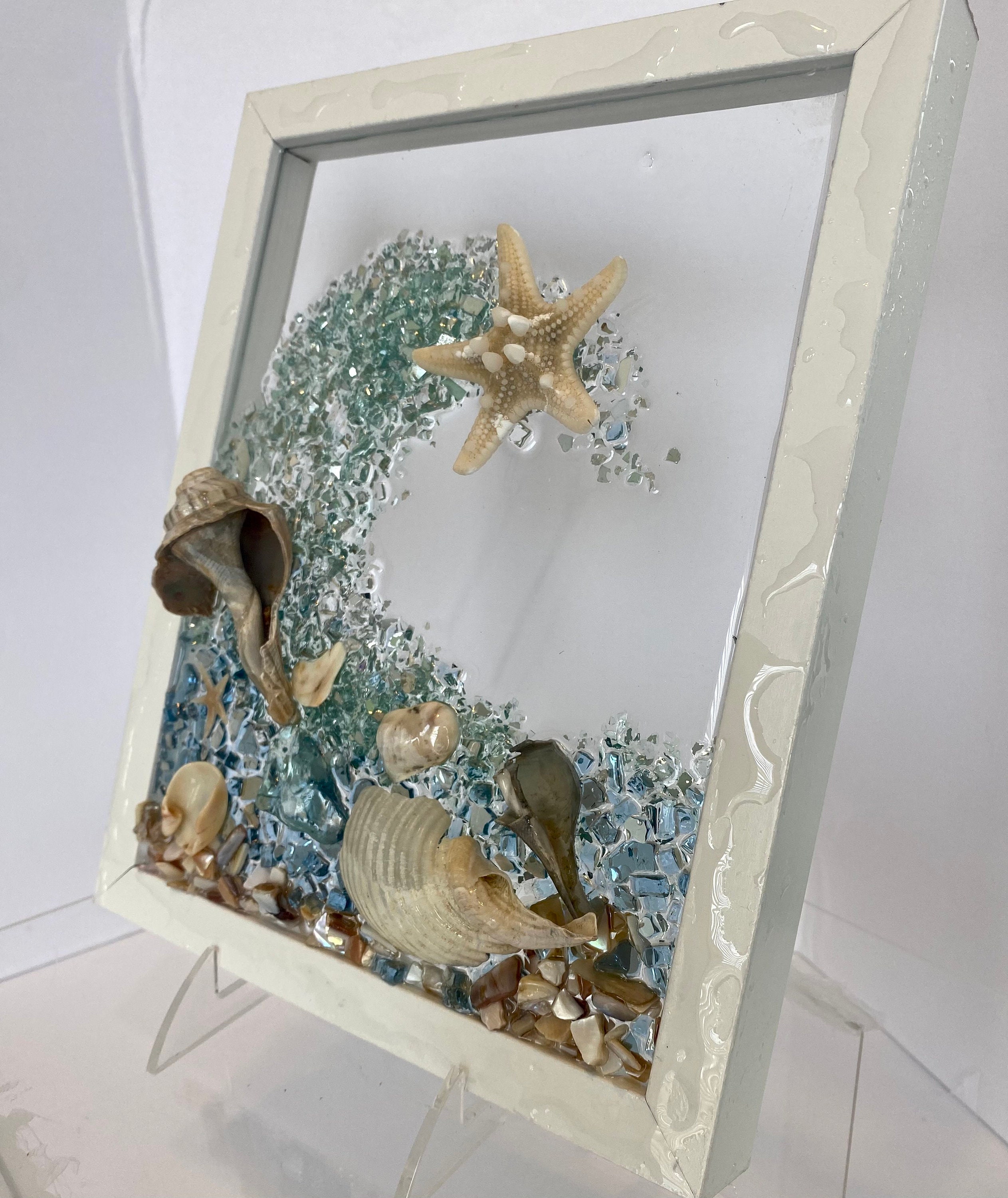In this auspicious occasion, we are delighted to delve into the intriguing topic related to Dive into the Shimmering World of Seaglass Art!. Let’s weave interesting information and offer fresh perspectives to the readers.
Introduction
Dive into the Shimmering World of Seaglass Art!

Hey there, young artist! Are you ready to unlock the secrets of drawing seaglass? It’s a beautiful way to capture the magic of the ocean and the unique textures of these smooth, colorful treasures.
Let’s start by understanding what makes seaglass so special:
- The History: Seaglass is formed when glass fragments, tossed into the ocean by humans, are tumbled and smoothed by the waves and sand for years. Each piece holds a story of the sea!
- The Colors: The colors of seaglass are often muted and soft, with shades of green, blue, brown, and white being most common. But sometimes, you can find rare and vibrant hues like pink, purple, and even yellow!
- The Shapes: Seaglass comes in all sorts of shapes, from rounded pebbles to jagged shards. This variety makes it a fascinating subject for drawing.

Now, let’s dive into the drawing process!
1. Gather Your Materials:
- Paper: You can use any kind of paper, but drawing paper or sketch paper will give you a nice smooth surface.
- Pencils: Start with a regular HB pencil for sketching and shading. You can also use colored pencils for adding details and color.
- Eraser: A good eraser is essential for fixing mistakes and creating highlights.
- Reference Images: Find some photos of seaglass online or take your own pictures of real seaglass.


2. Sketching the Seaglass:
- Start Simple: Look at your reference image and try to identify the basic shapes of the seaglass. Is it round, oval, or more angular?
- Light Lines: Use your pencil to lightly sketch the outlines of the seaglass. Don’t worry about making them perfect at this stage.
- Focus on the Edges: Pay attention to the curves and edges of the seaglass. Are they smooth or rough? Are there any chips or cracks?
- Add Details: Once you have the basic shapes, you can start adding details like the texture of the surface, the way the light reflects off the glass, and any unique markings or patterns.

3. Shading the Seaglass:
- Light and Shadow: Think about how light would fall on the seaglass. Where would the brightest areas be? Where would the shadows be?
- Gradual Shading: Use your pencil to create gradual shades of gray, going from dark to light. This will give your seaglass a more realistic look.
- Blending: You can use your finger or a blending tool to smooth out the shading and create a more seamless transition between light and shadow.

4. Adding Color (Optional):
- Color Palette: Choose colors that match the seaglass in your reference image.
- Layering: Start with light layers of color and build up the intensity gradually.
- Highlighting: Use a white or light-colored pencil to add highlights to the seaglass, making it appear shiny and reflective.
5. Background and Composition:
- Setting the Scene: Think about where you want to place your seaglass. On a beach? In a shell? On a piece of driftwood?
- Simple Background: You can create a simple background with lines or shapes, or you can use a more detailed background with textures and patterns.
- Arrangement: Arrange your seaglass on the page in a way that is visually appealing.
Benefits of Drawing Seaglass:
- Creativity: Drawing allows you to express your creativity and imagination. You can experiment with different styles, colors, and compositions.
- Observation: Drawing helps you develop your observation skills. You’ll start noticing the details of the world around you that you might have missed before.
- Focus and Concentration: Drawing requires focus and concentration. It can help you relax and clear your mind.
- Patience: Drawing takes time and practice. It teaches you the value of patience and perseverance.
- Self-Expression: Drawing is a powerful form of self-expression. It allows you to communicate your thoughts, feelings, and ideas in a visual way.
FAQs:
1. What if I’m not good at drawing?
That’s okay! Everyone starts somewhere. The most important thing is to have fun and enjoy the process. Don’t be afraid to make mistakes. They are part of learning.
2. What if I don’t have real seaglass to look at?
That’s fine too! You can find plenty of reference images online. Just search for "seaglass photos" or "seaglass art."
3. How can I make my drawings look more realistic?
Practice! The more you draw, the better you’ll become at capturing the details and textures of seaglass. You can also try using different drawing techniques, such as hatching, cross-hatching, and stippling.
4. What kind of seaglass should I draw?
Draw whatever you like! There are no rules. You can draw a single piece of seaglass, a collection of seaglass, or even a seaglass landscape.
5. Can I use my drawings to make art projects?
Absolutely! You can use your seaglass drawings to create greeting cards, bookmarks, or even framed art pieces. You can also use them as inspiration for other crafts, like painting or jewelry making.
Remember, drawing is a journey, not a destination. Have fun, be creative, and let your imagination run wild!

Thus, we hope this article has provided valuable insights into Downloads Dive into the Shimmering World of Seaglass Art!. We appreciate your attention to our article. See you in our next article!
 cryptonias.my.id News Bisnis Technology Tutorial
cryptonias.my.id News Bisnis Technology Tutorial